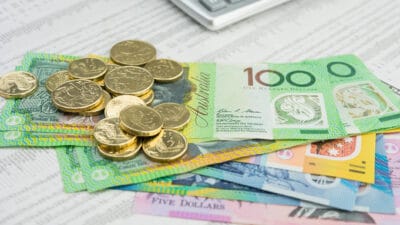If you're a regular The Motley Fool reader, you'd already know this year has been a scary rollercoaster.
The S&P/ASX 200 Index (ASX: XJO) is currently 11% down year to date, but at various times in 2022 it has swung up or down 15% in a matter of weeks.
If you don't hold many mining stocks, this volatility is likely to have been even greater. Your face will be pretty green by now.
If you hold or are interested in buying ASX shares, you may be wondering when all this uncertainty and anxiety might settle down.
AMP Ltd (ASX: AMP) senior economist Diana Mousina this week explained what's going on right now and took a stab at answering that question.
Why has 2022 been so stressful?
While there have been many factors pushing and pulling the share market, the predominant force in 2022 seems to be the aggressive rise in interest rates — and the fear of more.
In Australia, the Reserve Bank of Australia cash rate has now risen every monthly board meeting since May.
"94% of developed market central banks are lifting rates along with 86% of emerging market central banks," said Mousina in a memo to AMP clients.
"Interest rate rises and expectations of further hikes have been negative for equity markets — along with other factors like high inflation, especially in commodities, rising geopolitical tensions and elevated recession risks."
So when will we see the Reserve Bank give the stock markets and mortgage holders a break?
To answer that, one must understand the concept of the "neutral" interest rate.
"The neutral interest rate is a concept referred to by economists which is the level of the cash rate when the economy is in equilibrium," Mousina said.
"At this point, domestic investment and domestic savings are equal and the labour market is at full employment."
Mousina reckons that Australia is now actually pretty close to the neutral rate.
While the RBA targets a range between 2.5% to 4.5%, the AMP team thinks it's more like 2% to 2.5% because of the high debt levels of Australian households.
"With the rate hike in October, the level of the cash rate is now at 2.6% and is slightly above neutral in our view, which should put downward pressure on economic growth and inflation."
Already the pace of rate hikes slowed this month as the RBA chose to step it up in a 25-basis point increment, rather than 50 as it was in previous months.
This is when the pain might end
But it's not just a matter of reaching neutrality then stopping.
Remember inflation? That was the whole point of 2022's interest rate rises.
There has to be a sign that inflation is under control before the RBA and its global counterparts contemplate pausing rate increases.
Unfortunately, spending in Australia has not yet slowed significantly.
"This is because consumers and businesses were in very good shape at the beginning of the tightening cycle and because there are lags from rate hikes to their impact on spending," said Mousina.
"But, once interest rates lift above the neutral rate, monetary policy will have a contractionary impact on the economy and GDP growth will slow down considerably."
Therefore, this is going to take a few more months to play out.
But even then, investors need to watch the economy carefully. Because if the rate hikes do too much damage then that won't be good for company earnings.
"We are getting closer to a slowing in central bank rate increases before we see an eventual pause in the rate hike cycle — probably some time in early 2023 for most central banks," said Mousina.
"This should be positive for share markets, unless the economic data deterioriates significantly off the back of the higher interest rate environment. So monitoring leading economic indicators and recession signals remains very important."
Datt Capital portfolio manager Emanuel Datt pointed out that as the US interest rate bursts way ahead of Australia's, demand will surge for ASX shares.
"For local investors, a weaker dollar makes Australian equities more attractively priced for international investors which may provide a measure of support for local market."









